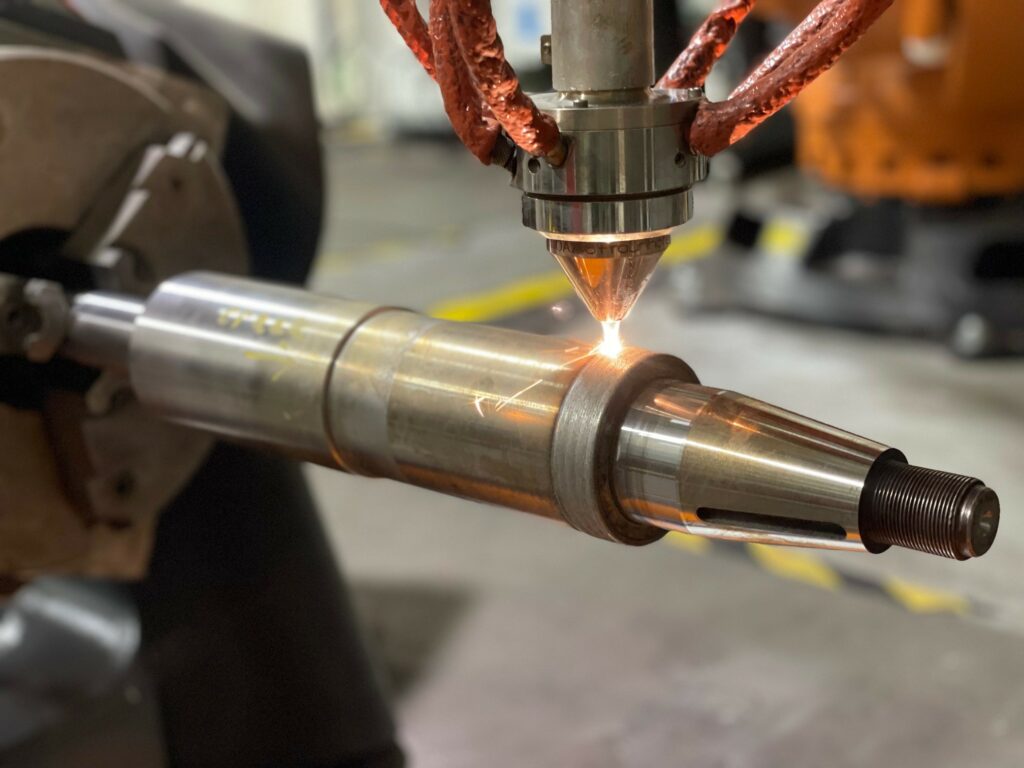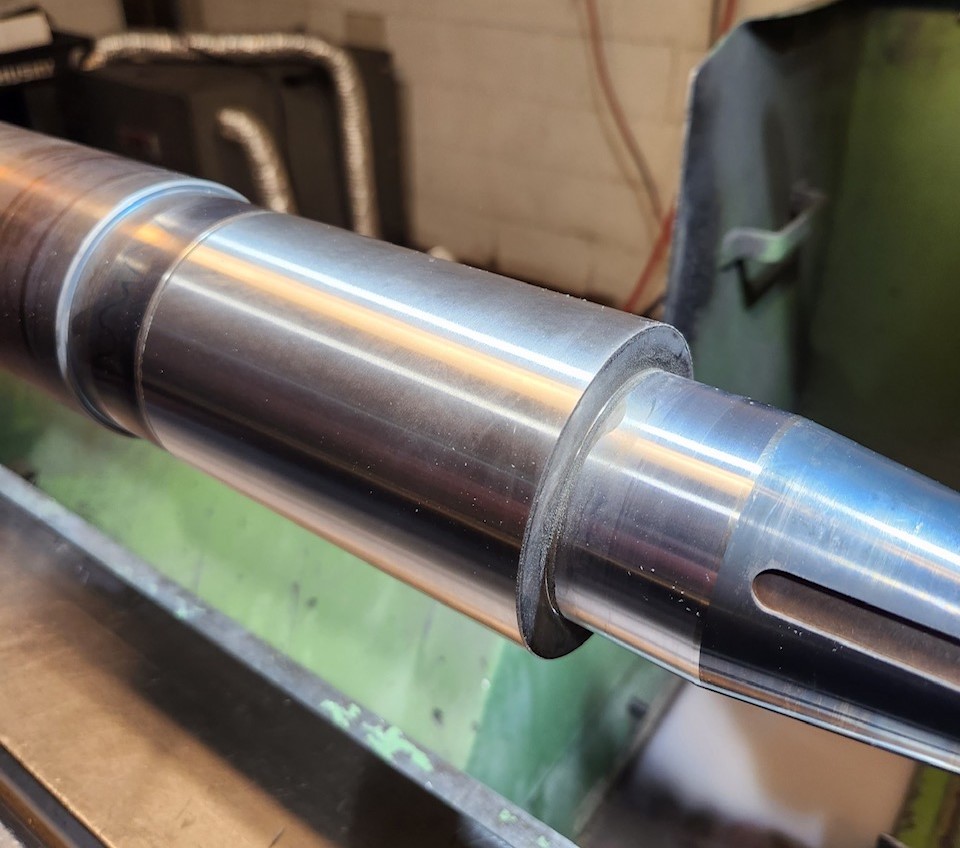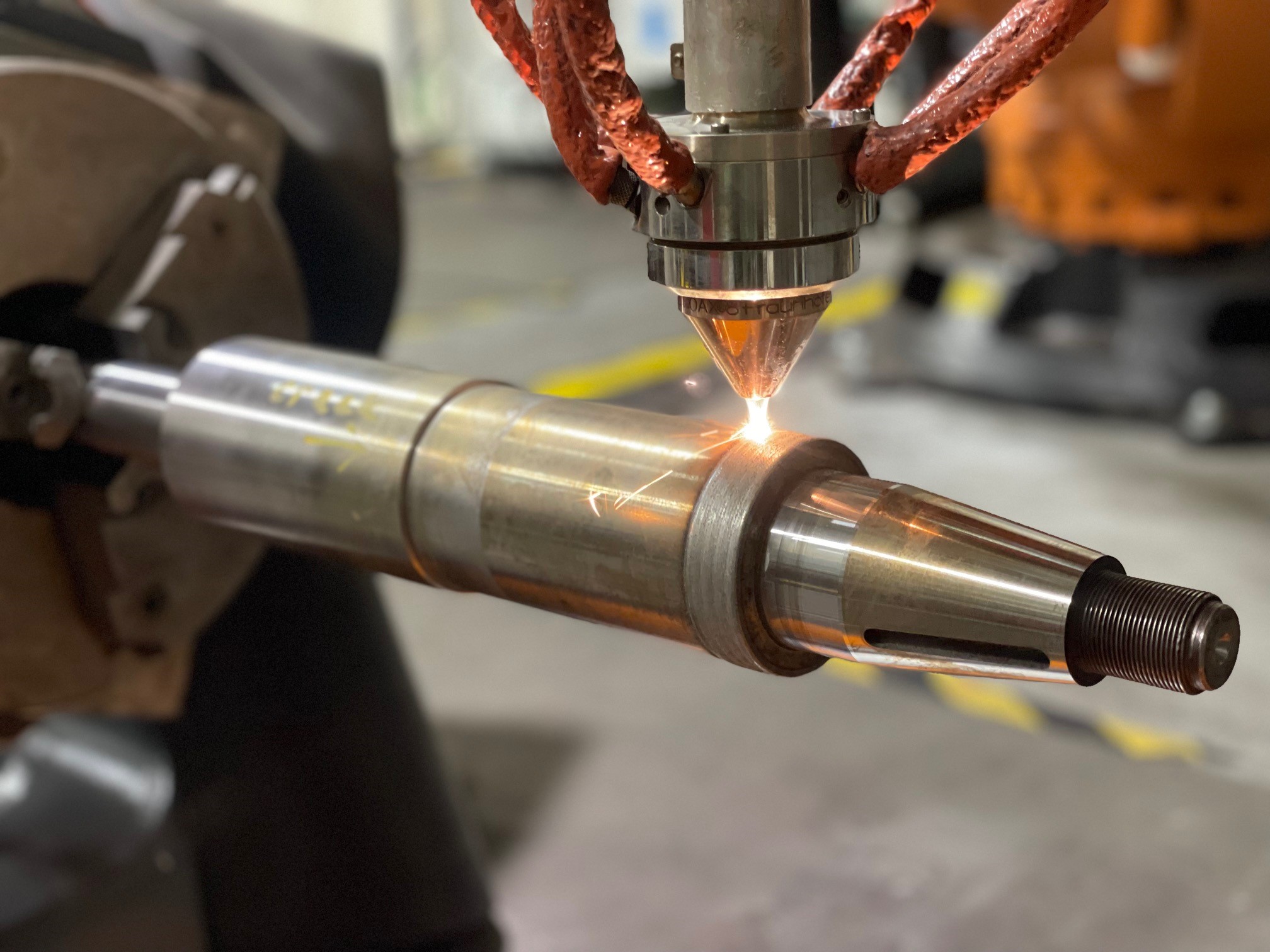Shaft laser cladding is a highly effective process for the repair and refurbishment of industrial machinery components such as precision tools, motor shafts, centrifuge components etc. especially those that have suffered from wear and tear or corrosion. This process uses a high-powered laser beam to melt and fuse a layer of metal powder onto the surface of the shaft, thereby restoring its shape, size, and functional properties.
One of the key advantages of shaft laser cladding is the minimal heat input into the part, resulting in minimal to no distortion in most cases. This is because the laser cladding process uses a highly focused beam that delivers a concentrated amount of energy to a very small area. This focused heat input prevents the surrounding material from being overheated and avoids warping or cracking of the shaft. There is no need to straighten or machine the shafts to get them back to dimensional tolerances.


Picture: Left, Laser cladding on precision machine tool shaft. Right, shaft machined to the tolerance
Another significant benefit of laser cladding is its ability to produce consistent hardness with minimal dilution. The process involves melting the powder material onto the surface of the shaft to form a coating. This coating material is not diluted with the substrate material, resulting in a high-quality deposit that exhibits the required properties. In contrast, conventional welding techniques such as Plasma Transferred Arc require multiple layers to achieve similar properties.
Due to the fast cooling rates and fine grain microstructure, deposited clad material results in high hardness. The amount of material required for cleanup is often substantially less than the conventional shaft cladding techniques. Unlike hard chrome, the coating exhibits strong metallurgical bonding with 99.99 % dense coatings and do not chip or peel.
Wide variety of coating materials such as Stellite 6, Stellite 12, Inconel 625, Inconel 718, Stainless steel 431, Stainless steel 316 and many more can be deposited on the shafts based on the functional requirements. Click here for a detailed list of materials.
Overall, shaft laser cladding is an effective and efficient technique for refurbishing and repairing industrial machinery components. Its ability to produce high-quality coatings with minimal distortion and dilution makes it a popular choice among industrial maintenance professionals. Whether you are dealing with a worn-out shaft or a corroded component, laser cladding can help you restore your equipment to its original state and prolong its lifespan.

